“But, the Spanish eat cheese and bread with everything!” This is what I commonly heard when talking to people about my diet restrictions on gluten and dairy prior to leaving on the Camino de Santiago de Compostela in Spain – a 500-mile pilgrimage that would require me to eat close to 5,000 calories a day in order to handle trekking an average of 15 miles a day, while only being able to carry 15 lbs on my back. Here’s to hoping the Camino provides (a common phrase you hear throughout the walkabout).
The Camino is a series of pilgrimages across Spain, that lead to the shrine of apostle St. James in Santiago, Spain. I decided to walk the Camino Frances, or the French Way, known to be the most popular of the 12 routes. This starts in St. Jean-Pied-Du-Port, France and runs across Northern Spain until reaching Santiago de Compostela, 500 miles later. So, how did I do it? Well.. It wasn’t easy, and truth be told, the Spanish do eat cheese and bread with most meals.. And yes, it smells delicioso.
I personally have been gluten free since 2012, and casein free for the past year. Gluten is a protein found in wheat, rye, and barley and sometimes other related grains. Casein on the other hand, is a protein found mostly in cow’s milk. For me, this means I have no problem digesting sheep or goat’s milk or cheese, unlike those who are lactose intolerant. So, how did I do it? Let’s start with all of the ways I prepared.
First, knowing that there weren’t going to be very many options for calories on the Camino, I decided to make as much space as I could for Clif Bars, which are both gluten and dairy free. Each bar is around 250 calories, and I took 20 bars with me. These were to be used in situations where I didn’t have any other food options. That worked great for me, as I ate the last half of a bar on the second to last day.
Second, I didn’t realize how privileged I was to speak Spanish on the Camino, until people started making comments about it. I would say more often that not, people do not speak English in northern Spain. This makes things difficult when you have to communicate that you have diet restrictions. So, my biggest recommendation is to either use a translation app on your phone, or to memorize the following phrases… “Tiene harina de trigo?” (Does this have wheat flour?), “Tiene leche?” (Does this have dairy?), “Soy celiaco” (I’m celiac) and, “Tengo alergico al marina de trio y leche” (I’m allergic to wheat flour and milk). Being able to say this, helped waiters understand that I wasn’t being some picky foreigner (no one wants to be that), as I had my reasons for asking. Here’s a breakdown of typical daily meals that gave me enough calories to sustain my body throughout the camino.
Breakfast:
Albergues, hostels, hostelerias, pensiones and hotels will sometimes have breakfast included, but it’s almost always carb-y/gluten-y, aka bread and marmalade. In such cases, they would discount my stay knowing I wouldn’t be able to indulge. Other times, you would get lucky and find fruit juice (mm Zummo!), and rice cakes available. Therefore, with such restrictions, you will most likely have to visit a local ‘bar’ for breakfast. And I don’t mean a bar that only serves alcohol after 12 PM. Bars in Spain are an all-in-one cafe, restaurant and bar, generally open at around 7 AM. Most bars offer ‘pinchos,’ which is Northern Spain’s version of tapas, or small plates. Most mornings, I would have a Spanish Tortilla. Being from Southern California, I assumed all tortillas were well, tortillas.. the bread of tacos and burritos, either corn or wheat based. Spanish tortillas on the other hand, are like baked omelets with onions and potatoes. Eating a large slice of this, along with a cup of coffee, and juice would usually be enough to get me started in the morning. Do I ever want to see or taste a Spanish Tortilla again, after having if 1-2 times a day for 30 straight days? Well, that’s for a different conversation.
Snack 1:
It’s good to maintain regular eating throughout the day, while walking on the Camino. Listening to your body is imperative. A snack would generally mean either downing more Spanish Tortilla at a local bar, along with some more coffee, sheep’s or goat’s cheese, and/or eating bag of nuts, chips, olives, or dry fruit. If a bar offered other pinchos options, I would usually partake in feasting on those. You would be surprised how many of these plates are inherently gluten and dairy free. Also, walk-by snacking. Often times we would pick fruit trees and grapes off vines for snacks. Sometimes you have to help the Camino in providing 😉
Lunch:
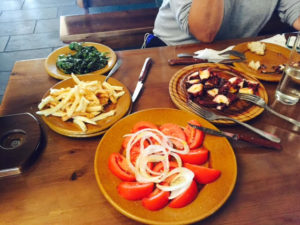
For lunch, we would almost always order 1-2 baskets of fries (make sure to ask if they are breaded) and a very large tomato salad to go with. Sometimes we got lucky, and would find a lunch special that was rice based, and included some sort of protein option. Other times, I would just eat some more Spanish Tortilla. Beggars can’t be choosers.
Snack 2:
Pinchos, fruit, rice cakes, nuts, Clif Bar, or anything I can find.. And more coffee, of course! Sometimes, there are make-shift donation-based cafes on the camino. These are a God-send, because they a) appear when you are in most need, and b) offer GF/Dairy free options, such as fresh juice, coffee, tea, rice cakes, candy bars (Snickers are GF!) and other options. I loved running into, and supporting these pop-ups!
Dinner:
Most nights, as a pilgrim, you are going to eat a Pilgrim’s Dinner meal (three course meal that includes either water or wine). Not because they are discounted, but because most restaurants don’t start serving dinner until around 8-9 PM and you are absolutely famished by 5 PM after walking 15 miles. About 75% of the time, I didn’t have much trouble finding meals that included meat and vegetables, but there were a few challenging moments where I regrettably remember pouring pasta sauce over stale rice in hungry desperation. Desperate and hungry times, my friends! If your albergue has a kitchen, however, and there is a nearby grocery store, you can generally concoct your own meal. Often this would mean eggs with a salad and potato chips. In bigger cities, you WILL find more restaurants (mmm Pulpeiras), and markets with gluten free sections, and it’s a glorious feeling when you do. Schar is the most popular gluten-free brand sold throughout Europe, since they are based in Italy, and they make breads, pastas, cookies, etc. Funny story about how I discovered Schar. I stumbled upon Albergue de Carrasquedo, which used to be a monastery, about 1-2 miles (2.5 kilometers) inland from the Town of Granon. It was a total of 13 euros for a private room, dinner, breakfast and laundry service. By this point of the Camino, such amenities for that price were unheard of, and so this was definitely worth walking the extra few kilometers off the beaten path for. Although I was expecting to have God-knows-what served to me for dinner, I was surprised to find everything served being gluten free when I commented on having an allergy, including delicious oven baked gluten free bread! I thought I was delirious from the day’s 18 mile walk. When I asked the owner about how she had so many gluten free options, she told me about the Schar brand, and that I could find it at most of the large grocery stores, such as Mercadona. After eating two entire baguettes, I am pretty sure she told me they ran out so I wouldn’t eat her house down. From then on, I would buy enough to carry on my person, in-between each big city, and re-filled (re-fueled?) when necessary.
Dessert:
Something the Spanish know how to well! Dark chocolate, fresh fruit, flan (GF), Crema Catalan (GF), Tarta de Santiago, and Quince (jelly pie!). See this exceptional list of desert options on this menu!
Alcohol:
Cidra, wine, and sangria! Did I mention Cidra? Cidra is Spain’s world renowned Cider, and it is delicioso! Which means, when you’re picking apple trees on the road as a snack, you will probably spit out your first bite, because they are likely cider apples. I didn’t know this until I recently took a cider making class. Learn from my mistake, and don’t pick the sour apple trees! Um, can you also say wine country?! Wine flows plenty in Northern Spain and don’t forget about the pilgrims’ favorite fountain, Bodegas Irache, which is literally flowing with wine all day and night. You can find it in Estella, on the way to Los Arcos. And on your way there, remember to find a cup so when you get to the fountain you can pour yourself a glass, or 2, or 3… Otherwise, you are looking at pouring straight into your mouth (and not one want to see that), or subbing your water canteen, for wine.
All in all, I survived. Easy? Um, no. Definitely not. Do I ever want to see ponchos, paella or Clif Bars again? Not particularly. Did I eat like a competitive eater upon returning? Yep. But I get to say I completed the Camino de Santiago, and have all of the stories and memorable experiences to go with it, permanent blisters and all – Which means you can too!
Buen Camino, fellow peregrinos!
*** Feel free to e-mail Christina with any questions you may have regarding the camino at [email protected]. Her website is www.buenqamino.com.
Tags : Camino de Santiago, dairy free, Dieting, eat clean, Eating, Food, Food and Drink, food and drink for women, Girlzone, gluten, gluten-free, hiking, lifestyle, outdoors, Recipes, Spain, Travel
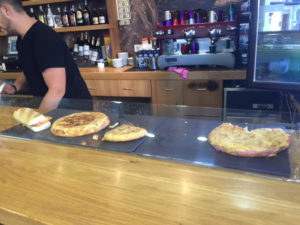
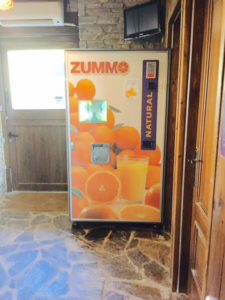
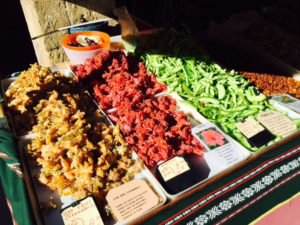
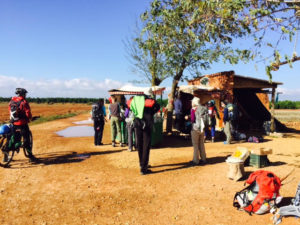
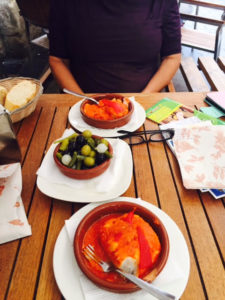
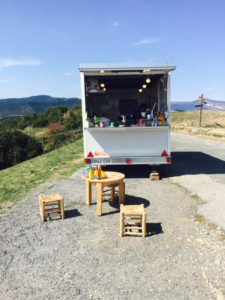
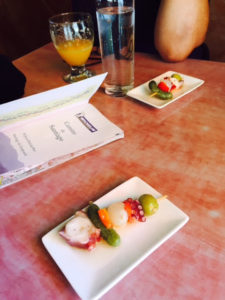
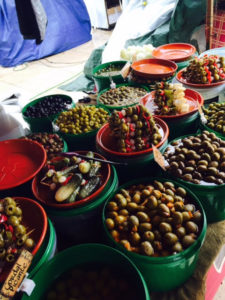

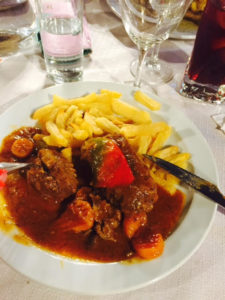
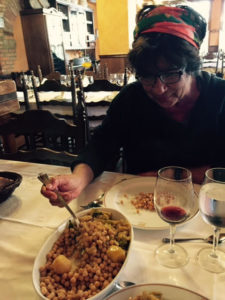
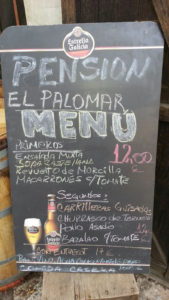
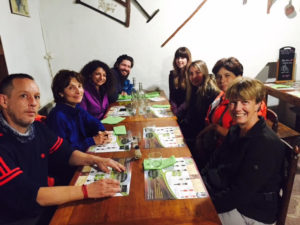
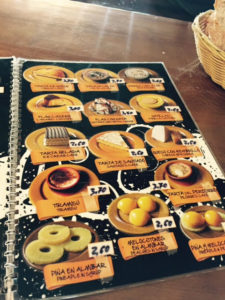
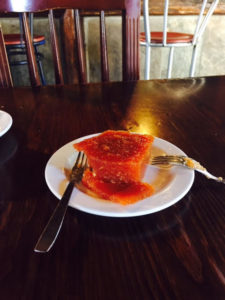
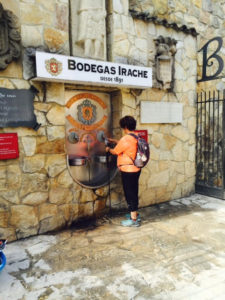
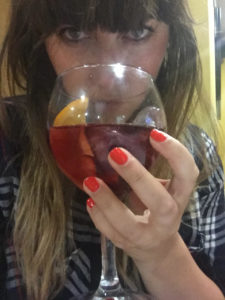
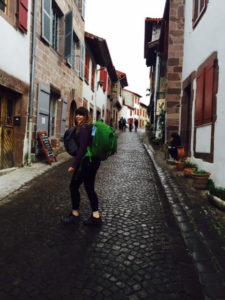
Subscribe. Follow. Like.
To RSS Feed
Followers
Fans